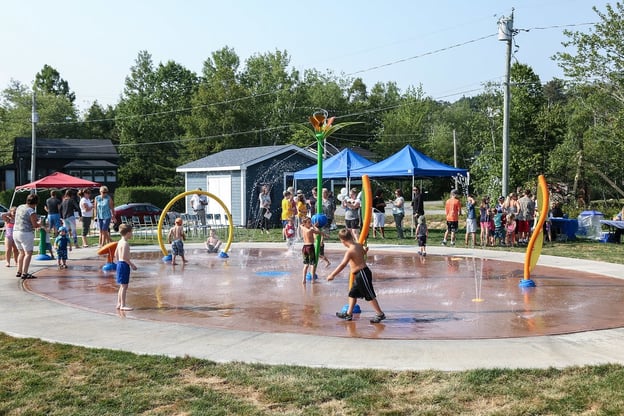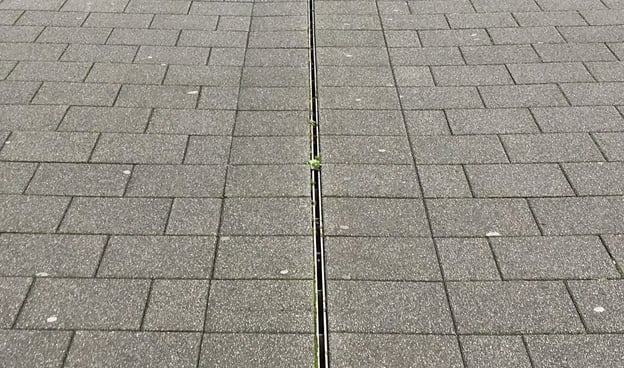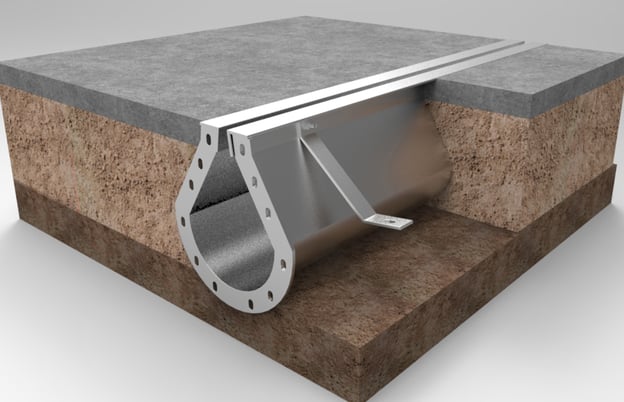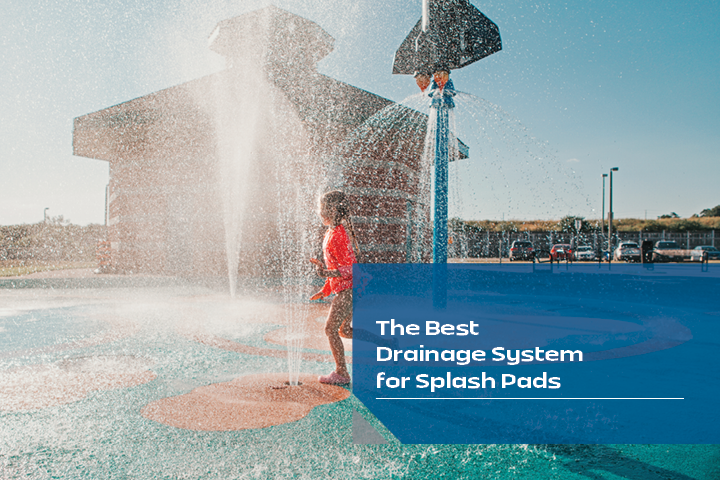For small children, splash pads can be a more practical option for summer fun instead of larger swimming pools, and you can find them in water parks, community centers, recreational parks, and other public spaces.
Just like with other features that use water, splash pads can create issues if poorly managed. Maintenance and proper design are essential in ensuring minimal risk to health and safety, both in terms of pathogens and the various hazards that standing water can create. The right drainage system can help, ensuring that the splash pad is up to code, safe, and sanitary for everyone to use.
Why Splash Pads Are Popular

When people think of summer fun, they typically think of the pool. Pools can be fun for people of various ages, but younger children tend to be limited in what they can do within a pool. Pools can also become crowded and unsafe for young children, making them less-than-ideal.
That's where splash pads come in; these small areas are designed with younger children in mind, especially toddlers. There is minimal standing water so that children can run and play more freely, minimizing the risk of slipping.
The Problem with Splash Pads
Splash pads do have benefits: they are cheaper than pools to build and maintain, they offer fun for younger children, and they are safer in the sense that there is a significantly smaller risk of drowning. These benefits don't mean that splash pads are problem-free, however.
Even without standing water, there is still a risk of children falling and getting injured, as well as the more serious risk of contamination. Splash pads can host bacteria and germs that can lead to sickness, like vomiting and diarrhea. In fact, in July 2014, according to the CDC, the Tennessee Department of Health linked a salmonella outbreak to a splash pad.
Further investigations led to the identification and prevention of similar outbreaks at other splash pads within the state. In total, the team evaluated the water at 29 of the 59 pads within the state, finding that not only did 20% not have the recommended chlorine level, but nearly 17% of water samples had germs that could make people sick. These germs included E. coli, Giardia, norovirus, and Salmonella.
The key to preventing outbreaks is to practice proper sanitation and maintenance at splash pads. This includes cleaning and disinfecting sprayers, ensuring the proper chlorine levels, and having the appropriate drainage system in place.
Splash Pads and Drainage Systems

Drainage systems are an essential part of creating safe, sanitary places where water may be found. Drainage systems help to prevent standing water, which can lead to the growth of many harmful bacteria, as well as the creation of slipping hazards. Drains also help to ensure that dirty and contaminated water is sent away where it can drain away safely or be sent through a high-quality filtration and disinfecting system.
The Best Drainage System for Splash Pads
Choosing the best drainage system for splash pads is critical. It’s not just about choosing the most efficient system; you also need the safest and most sanitary system possible. That means taking things like construction, materials, capacity, and ease of maintenance into mind.
Traditional Trench Drain Systems
Traditional trench drain systems were once the most common drain system around pools, splash pads, and other areas. They typically consist of a large opening covered by a grate cover with slots to prevent people and objects from falling in. They can be effective, but they aren't easy to maintain: if the grate isn't completely clean, bacteria can stick to it, and small kids can become ill.
Traditional trench drains also pose safety hazards, particularly where the grate is concerned. They are designed to prevent falling into the drain, but people can still trip, including small children who may still be learning to walk. Broken grates also create safety hazards, as children may not know to avoid them and can become seriously injured as a result.
Slot Drain Systems
Slot Drain is a newer style of trench drain that is unique in its design. Unlike traditional systems, Slot Drain is a pre-sloped, pre-assembled system with a slim channel opening across the drain's entire length. This makes the system easy to clean and sanitize, especially with Slot Drain Systems’ Flush-Flo attachment, which provides a water line connection for manual or automatic flushing.

Lacking a grate also makes the system safer to use on splash pads frequented by young children. Kids are less likely to trip and hurt themselves with Slot Drain. Also, the bacteria-resistant stainless steel, along with the radiused edge design, prevents bacteria from clinging and growing.
There are several Slot Drain models, but the 6000 Series and 7000 Series are two to consider, which both provide durability and efficiency. They’re ideal for smaller community splash pads and can handle regular traffic.
Protecting Kids on Splash Pads
Small kids love splash pads, and parents will love it when their kids have fun. What is essential is ensuring that splash pads are safe, not just from accidents but contamination as well. When you own or manage a splash pad, you must keep it safe, sanitary, and well-maintained.
Part of maintenance is taking care of the water, ensuring proper chlorine levels, and keeping the whole space clean. The other part is investing in the best drainage system for splash pads: Slot Drain. Contact the drainage experts at Slot Drain today to ensure a safe, sanitary splash pad for kids to enjoy all summer.


